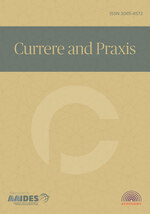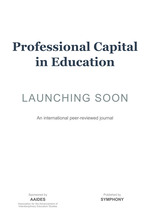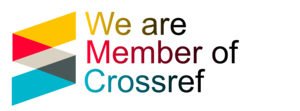Interdependent versus independent research: An overdue shift in perspective
DOI:
https://doi.org/10.70116/2980274131Keywords:
Postmodern analysis, network analysis, AI, machine learning, student achievementAbstract
Traditionally, research in the social sciences has focused on the role of individual attitudes, skills, and dyadic relationships in shaping educational outcomes. However, less attention has been paid to the influence of broader patterns of social interaction, particularly within school contexts. This study demonstrated how interaction-based data could be generated and analyzed to better capture these dynamics. Drawing on data collected from 2,682 students and 118 teachers across 10 schools, we applied an AI-driven machine learning algorithm to examine the effects of interactive dynamics on student achievement. Results indicate that while socioeconomic status (SES) remains a consistent predictor of student test scores, the most significant effects stem from interactions related to social capital, the diversity of information each person has access to, and to the degree of effort one invests in network dynamics. These findings highlight the value of incorporating social network structures into educational research and suggest that interactive dynamics within school communities may play a pivotal role in shaping student achievement.
Downloads
References
Alspaugh, J. W. (1996). The effects of geographic and management factors on the cost of pupil transportation. Journal of Education Finance, 22(2), 180-194.
Altman, N., Carley, K., & Reminga, J. (2017). ORA user guide 2017 (CMU-ISR-17-100). S. o. C. S. Institute for Software Research.
Bailey, D. E., Faraj, S., Hinds, P. J., Leonardi, P. M., & von Krogh, G. (2022). We are all theorists of technology now: A relational perspective on emerging technology and organizing. Organization Science, 33(1), 1–18. DOI: https://doi.org/10.1287/orsc.2021.1562
Bartels, J. M., & Magun-Jackson, S. (2021). Achievement goals as predictors of motivation and academic persistence. Social Psychology of Education, 24(2), 491–507.
Bastos, J. A. (2022). Predicting credit scores with boosted decision trees. Forecasting, 4(4), 925–935. DOI: https://doi.org/10.3390/forecast4040050
Bedeian, A. G., & Hunt, J. G. (2006). Academic amnesia and vestigial assumptions of our forefathers. The Leadership Quarterly, 17(2), 190-205. DOI: https://doi.org/10.1016/j.leaqua.2005.12.006
Boisot, M., & McKelvey, B. (2010). Integrating modernist and postmodernist perspectives on organizations: A complexity science bridge. Academy of Management Review, 35(3), 415–433. DOI: https://doi.org/10.5465/AMR.2010.51142028
Bond, R. M., Chykina, V., & Jones, J. J. (2017). Social network effects on academic achievement. The Social Science Journal, 54(4), 438–449. DOI: https://doi.org/10.1016/j.soscij.2017.06.001
Borgatti, S. P., Everett, M. G., & Johnson, J. (2013). Analyzing social networks. Sage.
Borgatti, S. P., Mehra, A., Brass, D. J., & Labianca, G. (2009). Network analysis in the social sciences. Science, 323(5916), 892–895. DOI: https://doi.org/10.1126/science.1165821
Bossert, S. T., Dwyer, D. C., Rowan, B., & Lee, G. V. (1982). The instructional management role of the principal. Educational Administration Quarterly, 18(3), 34–64. DOI: https://doi.org/10.1177/0013161X82018003004
Bouchet, F., & Kizilcec, R. F. (2020). Self-concept as a predictor of student engagement in online courses. Computers & Education, 152, 103894.
Briley, B. C. (2016). Exploring the effects of network dynamics on student test scores in a rural middle school (Doctoral dissertation, Clemson University). Retrieved from https://open.clemson.edu/cgi/viewcontent.cgi?article=2748&context=all_dissertations
Bruun, J., & Brewe, E. (2013). Talking and learning physics: Predicting future grades from network measures and Force Concept Inventory pretest scores. Physical Review Special Topics—Physics Education Research, 9(2), 020109. DOI: https://doi.org/10.1103/PhysRevSTPER.9.020109
Butt, N. A., Mahmood, Z., Shakeel, K., Alfarhood, S., Safran, M., & Ashraf, I. (2023). Performance prediction of students in higher education using multi model ensemble approach. IEEE Access, 11, 136091–136108. DOI: https://doi.org/10.1109/ACCESS.2023.3336987
Chen, T., & Guestrin, C. (2016, August). Xgboost: A scalable tree boosting system. In Proceedings of the 22nd ACM SIGKDD International Conference on Knowledge Discovery and Data Mining (pp. 785–794). DOI: https://doi.org/10.1145/2939672.2939785
Cilliers, P. (1998). Complexity and postmodernism: Understanding complex systems. Routledge.
Coleman, J. S. (1968). Equality of educational opportunity. Equity and Excellence in Education, 6(5), 19–28. DOI: https://doi.org/10.1080/0020486680060504
Coleman, J. S., Campbell, E., Hopson, C., McPartland, J., Mood, A., & Weinfeld, F. D., & York, R. L. (1966). Equality of educational opportunity. U.S. Government Printing Office.
Comprehensive introduction for beginners. Visible Network Labs. https://visiblenetworklabs.com/guides/social-network-analysis-101/#elementor-toc__heading-anchor-1
Crotty, M. (1998). The foundations of social research. Sage.
Cullen-Lester, K. L., & Yammarino, F. J. (2016). Collective and network approaches to leadership: Special issue introduction. The Leadership Quarterly, 27(2), 173–180. DOI: https://doi.org/10.1016/j.leaqua.2016.02.001
Daly, A. J., Moolenaar, N. M., Der-Martirosian, C., & Liou, Y. (2014). Accessing capital resources: Investigating the effects of teacher human and social capital on student achievement. Teachers College Record, 116(7), 1–42. DOI: https://doi.org/10.1177/016146811411600702
Deniz, E. (2024). Evaluating the effectiveness of machine learning models in predicting student academic achievement. ADBA Computer Science, 1(1), 8–13. DOI: https://doi.org/10.69882/adba.cs.2024072
Dess, G. G., & Shaw, J. D. (2001). Voluntary turnover, social capital, and organizational performance. Academy of Management Review, 26(3), 446-456. DOI: https://doi.org/10.2307/259187
Dorogush, A. V., Ershov, V., & Gulin, A. (2018). CatBoost: Gradient boosting with categorical features support. arXiv preprint arXiv:1810.11363.
Eccles, J. S., & Wigfield, A. (2002). Motivational beliefs, values, and goals. Annual Review of Psychology, 53(1), 109-132. DOI: https://doi.org/10.1146/annurev.psych.53.100901.135153
Edmonds, R. R. (1979). Effective schools for the urban poor. Educational Leadership, 37(1), 15–24.
Elith, J., Leathwick, J. R., & Hastie, T. (2008). A working guide to boosted regression trees. Journal of Animal Ecology, 77(4), 802–813. DOI: https://doi.org/10.1111/j.1365-2656.2008.01390.x
Esposito, A. G., & Bauer, P. J. (2022). Determinants of elementary‐school academic achievement: Component cognitive abilities and memory integration. Child Development, 93(6), 1777-1792. DOI: https://doi.org/10.1111/cdev.13819
Flanigan, J. L., Marion, R. A., & Richardson, M. D. (1996). Causal and temporal analyses of increased funding on student achievement. Journal of Research and Development in Education, 30(4), 222–247.
Frank, K. A., Zhao, Y., & Borman, K. (2004). Social capital and the diffusion of innovations within organizations: The case of computer technology in schools. Sociology of Education, 77(2), 148-171. DOI: https://doi.org/10.1177/003804070407700203
Friedkin, N. E., & Slater, M. R. (1994). School leadership and performance: A social network approach. Sociology of Education, 67(2), 139-157. DOI: https://doi.org/10.2307/2112701
Friedman, M. (2001). Dynamics of reason. Csli Publications.
Gabidolla, M., Zharmagambetov, A., & Carreira-Perpiñán, M. Á. (2025). Boosted sparse oblique decision trees. Retrieved from http://faculty.ucmerced.edu/mcarreira-perpinan/papers/baylearn20b.pdf
Gremmen, M. C. (2018). Social network processes and academic functioning: The role of peers in students’ school well-being, academic engagement, and academic achievement.
Gremmen, M. C., Dijkstra, J. K., Steglich, C., & Veenstra, R. (2017). First selection, then influence: Developmental differences in friendship dynamics regarding academic achievement. Developmental Psychology, 53(7), 1356. DOI: https://doi.org/10.1037/dev0000314
Hallinger, P. (2007). Research on the practice of instructional and transformational leadership: Retrospect and prospect. Retrieved from https://research.acer.edu.au/research_conference_2007/7
Hallinger, P., & Heck, R. H. (1998). Exploring the principal’s contribution to school effectiveness: 1980–1995. School Effectiveness and School Improvement, 9, 157–191. DOI: https://doi.org/10.1080/0924345980090203
Hastie, T., Tibshirani, R., & Friedman, J. (2017). The elements of statistical learning: Data mining, inference, and prediction (2nd ed.). Springer.
Hedström, P., & Swedberg, R. (1998). Social mechanisms: An analytical approach to social theory. Cambridge University Press. DOI: https://doi.org/10.1017/CBO9780511663901
Hendrickx, M. (2012). The role of the teacher in classroom peer relations [Doctoral dissertation].
Hughes, J. N., Luo, W., Kwok, O. M., & Loyd, L. K. (2008). Teacher-student support, effortful engagement, and achievement: A 3-year longitudinal study. Journal of Educational Psychology, 100(1), 549–569. DOI: https://doi.org/10.1037/0022-0663.100.1.1
Hunt, J. G., & Dodge, G. E. (2000). Leadership déjà vu all over again. The Leadership Quarterly, 11(4), 435-458. DOI: https://doi.org/10.1016/S1048-9843(00)00058-8
Jabbar, H., Fong, C. J., Germain, E., Li, D., Sanchez, J., Sun, W.-L., & Devall, M. (2022). The competitive effects of school choice on student achievement: A systematic review. Educational Policy, 36(2), 247–281. DOI: https://doi.org/10.1177/0895904819874756
Jackson, J. C., Rand, D., Lewis, K., Norton, M. I., & Gray, K. (2017). Agent-based modeling: A guide for social psychologists. Social Psychological and Personality Science, 8(4), 387–395. DOI: https://doi.org/10.1177/1948550617691100
Jencks, C. (1972). Inequality: A reassessment of the effect of family and schooling in America. Basic Books.
Jiang, X. (2017). Understanding teacher effectiveness with complexity and network theories [Dissertation, Clemson University]. Clemson, SC.
Karaman, M. A., & Watson, J. C. (2020). Predictive role of growth mindset, coping, and self-efficacy on academic persistence. Journal of College Student Retention: Research, Theory & Practice, 22(4), 746–763.
Ke, G., Meng, Q., Finley, T., Wang, T., Chen, W., Ma, W., Ye, Q., & Liu, T. Y. (2017). LightGBM: A highly efficient gradient boosting decision tree. Advances in Neural Information Processing Systems, 30, 1–9.
Kezar, A. (2014). Higher education change and social networks: A review of research. The Journal of Higher Education, 85(1), 91-125. DOI: https://doi.org/10.1080/00221546.2014.11777320
Klapp, T., Klapp, A., & Gustafsson, J. E. (2024). Relations between students’ well-being and academic achievement: Evidence from Swedish compulsory school. European Journal of Psychology of Education, 39(1), 275–296. DOI: https://doi.org/10.1007/s10212-023-00690-9
Krackhardt, D. (1998). Simmelian ties: Super strong and sticky. In R. M. Kramer & M. A. Neale (Eds.), Power and influence in organizations (pp. 21–38). Sage. DOI: https://doi.org/10.4135/9781483345291.n2
Lei, H., Chiu, M. M., Wang, D., Wang, C., & Xie, T. (2022). Effects of game-based learning on students’ achievement in science: A meta-analysis. Journal of Educational Computing Research, 60(6), 1373–1398. DOI: https://doi.org/10.1177/07356331211064543
Leithwood, K., & Jantzi, D. (2005). A review of transformational school leadership research 1996–2005. Leadership and Policy in Schools, 4(3), 177–199. DOI: https://doi.org/10.1080/15700760500244769
Leithwood, K., & Jantzi, D. (2006). Transformational school leadership for large-scale reform: Effects on students, teachers, and their classroom practices. School Effectiveness and School Improvement, 17(2), 201–227. DOI: https://doi.org/10.1080/09243450600565829
Li, L. (2013). The complexity of language teachers’ beliefs and practice: One EFL teacher’s theories. The Language Learning Journal, 41(2), 175-191. DOI: https://doi.org/10.1080/09571736.2013.790132
Lichtenstein, B. B., Uhl-Bien, M., Marion, R., Seers, A., Orton, J. D., & Schreiber, C. (2006). Complexity leadership theory: An interactive perspective on leading in complex adaptive systems. Emergence: Complexity and Organization, 8(4), 2–12.
Liu, Y., Bellibaş, M. S., & Gümüş, S. (2020). The effect of instructional leadership and distributed leadership on teacher self-efficacy and job satisfaction: Mediating roles of supportive school culture and teacher collaboration. Educational Management Administration & Leadership, 49(3), 430–453. DOI: https://doi.org/10.1177/1741143220910438
Louis, K. S., & Marks, H. M. (1998). Does professional community affect the classroom? Teachers’ work and student experiences in restructuring schools. American Journal of Education, 106(4), 532-575. DOI: https://doi.org/10.1086/444197
López-Sánchez, M., Arango Paternina, C. M., Petro Petro, J., Lema Gómez, L., Eusse López, C., Petro, J. L., & Perea Velásquez, F. (2023). Academic performance and social networks of adolescents in a Caribbean city in Colombia. BMC Psychology, 11(1), 255. DOI: https://doi.org/10.1186/s40359-023-01299-9
Louis, K. S., Dretzke, B., & Wahlstrom, K. (2010). How does leadership affect student achievement? Results from a national US survey. School Effectiveness and School İmprovement, 21(3), 315-336. DOI: https://doi.org/10.1080/09243453.2010.486586
Lyotard, J.-F. (1984). The postmodern condition: A report on knowledge. Manchester University Press. DOI: https://doi.org/10.2307/1772278
Ma, X., & Marion, R. (2024). How does leadership affect teacher collaboration? Evidence from teachers in US schools. School Effectiveness and School Improvement, 35(2), 116–141. DOI: https://doi.org/10.1080/09243453.2024.2330533
Ma, X., & Marion, R. (2025). Linking distributed leadership to teacher job satisfaction in China: Mediating roles of teacher well-being and work motivation. Educational Management Administration & Leadership. Advance online publication. https://doi.org/10.1177/17411432241303299 DOI: https://doi.org/10.1177/17411432241303299
Marion, R., Christiansen, J., Klar, H. W., Schreiber, C., & Erdener, M. (2016). Informal leadership, interaction, cliques and productive capacity in organizations: A collectivist analysis. The Leadership Quarterly, 27(2), 242–260. DOI: https://doi.org/10.1016/j.leaqua.2016.01.003
Marion, R., & Gonzales, L. D. (2013). Leadership in education: Organizational theory for the practitioner. Waveland Press.
Marks, H. M., & Printy, S. M. (2003). Principal leadership and school performance: An integration of transformational and instructional leadership. Educational Administration Quarterly, 39(3), 370-397. DOI: https://doi.org/10.1177/0013161X03253412
Mehra, A., Dixon, A. L., Brass, D. J., & Robertson, B. (2006). The social network ties of group leaders: Implications for group performance and leader reputation. Organization Science, 17(1), 64-79. DOI: https://doi.org/10.1287/orsc.1050.0158
Moolenaar, N. M., & Sleegers, P. J. C. (2010). Social networks, trust, and innovation: The role of relationships in supporting an innovative climate in Dutch schools. In A. J. Daly (Ed.), Social network theory and educational change (pp. 97–114). Harvard University Press.
Moolenaar, N. M., Sleegers, P. J. C., & Daly, A. J. (2012). Teaming up: Linking collaboration networks, collective efficacy, and student achievement. Teaching and Teacher Education, 28(2), 251–262. DOI: https://doi.org/10.1016/j.tate.2011.10.001
Moolenaar, N. M., Daly, A. J., & Sleegers, P. J. (2010). Occupying the principal position: Examining relationships between transformational leadership, social network position, and schools’ innovative climate. Educational Administration Quarterly, 46(5), 623-670. DOI: https://doi.org/10.1177/0013161X10378689
Morinaj, J., de Moll, F., Hascher, T., Hadjar, A., Grecu, A., & Scharf, J. (2023). School alienation among adolescents in Switzerland and Luxembourg: The role of parent and peer supportive attitudes toward school and teacher autonomy support. Youth & Society, 55(2), 187–212. DOI: https://doi.org/10.1177/0044118X211043902
Natekin, A., & Knoll, A. (2013). Gradient boosting machines, a tutorial. Frontiers in Neurorobotics, 7. DOI: https://doi.org/10.3389/fnbot.2013.00021
Nunes, C., Oliveira, T., Castelli, M., & Cruz Jesus, F. (2023). Determinants of academic achievement: How parents and teachers influence high school students’ performance. Heliyon, 9(2). DOI: https://doi.org/10.1016/j.heliyon.2023.e13335
Obstfeld, D. (2005). Social networks, the tertius iungens orientation, and involvement in innovation. Administrative Science Quarterly, 50(1), 100-130. DOI: https://doi.org/10.2189/asqu.2005.50.1.100
Olivier, E., Archambault, I., De Clercq, M., & Galand, B. (2019). Student self-efficacy, classroom engagement, and academic achievement: Comparing three theoretical frameworks. Journal of Youth and Adolescence, 48, 326–340. DOI: https://doi.org/10.1007/s10964-018-0952-0
Pearce, C. L., Conger, J. A., & Locke, E. A. (2008). Shared leadership theory. The Leadership Quarterly, 19(5), 622-628. DOI: https://doi.org/10.1016/j.leaqua.2008.07.005
Pekrun, R. (2006). The control-value theory of achievement emotions: Assumptions, corollaries, and implications for educational research and practice. Educational Psychology Review, 18, 315–341. DOI: https://doi.org/10.1007/s10648-006-9029-9
Pil, F. K., & Leana, C. (2009). Applying organizational research to public school reform: The effects of teacher human and social capital on student performance. Academy of Management Journal, 52(6), 1101-1124. DOI: https://doi.org/10.5465/amj.2009.47084647
Ponomareva, N., Colthurst, T., Hendry, G., Haykal, S., & Radpour, S. (2017, December). Compact multi-class boosted trees. In 2017 IEEE International Conference on Big Data (Big Data) (pp. 47–56). IEEE. DOI: https://doi.org/10.1109/BigData.2017.8257910
Popper, K. R. (1961). The logic of scientific discovery. Basic Books.
Popper, K. R., Freed, J., & Freed, L. (1961). The logic of scientific discovery. Philosophy of Science, 28(3), 319–324. DOI: https://doi.org/10.1086/287817
Prigogine, I. (1997). The end of certainty. The Free Press.
Ridgeway, G. (2024). Generalized boosted models: A guide to the gbm package. Update, 1(1), 1–15.
Ronfeldt, M., Farmer, S. O., McQueen, K., & Grissom, J. A. (2015). Teacher collaboration in instructional teams and student achievement. American Educational Research Journal, 52(3), 475–514. DOI: https://doi.org/10.3102/0002831215585562
Roorda, D. L., Koomen, H. M., Spilt, J. L., & Oort, F. J. (2011). The influence of affective teacher–student relationships on students’ school engagement and achievement: A meta-analytic approach. Review of Educational Research, 81(4), 493–529. DOI: https://doi.org/10.3102/0034654311421793
Sammons, P., Hillman, J., & Mortimore, P. (1995). Key characteristics of effective schools: A review of school effectiveness research. OFSTED.
Schreiber, C., & Carley, K. M. (2008). Network leadership. In Complexity leadership (pp. 291–331). Information Age Charlotte.
Schreiber, C., Marion, R., Uhl-Bien, M., & Carley, K. (2006). Multi-agent based simulation of a model of complexity leadership. Paper presented at the International Conference on Complex Systems. Boston, MA.
Scott, J. (2000). Social network analysis (2nd ed.). Sage Publications.
Siciliano, M. D. (2016). It’s the quality not the quantity of ties that matters: Social networks and self-efficacy beliefs. American Educational Research Journal, 53(2), 227-262. DOI: https://doi.org/10.3102/0002831216629207
Somech, A. (2010). Participative decision making in schools: A mediating-moderating analytical framework for understanding school and teacher outcomes. Educational Administration Quarterly, 46(2), 174-209. DOI: https://doi.org/10.1177/1094670510361745
Somech, A., & Wenderow, M. (2006). The impact of participative and directive leadership on teachers’ performance: The intervening effects of job structuring, decision domain, and leader-member exchange. Educational Administration Quarterly, 42(5), 746-772. DOI: https://doi.org/10.1177/0013161X06290648
Spillane, J. P. (2005). Distributed leadership. The Educational Forum, 69(2), 143–150. DOI: https://doi.org/10.1080/00131720508984678
Subramani, N., Veerappampalayam Easwaramoorthy, S., Mohan, P., Subramanian, M., & Sambath, V. (2023). A gradient boosted decision tree-based influencer prediction in social network analysis. Big Data and Cognitive Computing, 7(6), 1-18. DOI: https://doi.org/10.3390/bdcc7010006
Supovitz, J., Sirinides, P., & May, H. (2010). How principals and peers influence teaching and learning. Educational Administration Quarterly, 46(1), 31–56. DOI: https://doi.org/10.1177/1094670509353043
Su-Russell, C., & Russell, L. T. (2021). Maternal autonomy support and children’s social competencies, academic skills, and persistence: Social determinants and mediation. Journal of Child and Family Studies, 30, 757-770. DOI: https://doi.org/10.1007/s10826-020-01869-0
Taboga, M. (2021). Boosted tree. In Lectures on machine learning. Retrieved from https://www.statlect.com/machine-learning/boosted-tree
Tan, E. (2014). Human capital theory: A holistic criticism. Review of Educational Research, 84(3), 411-445. DOI: https://doi.org/10.3102/0034654314532696
Technical bulletin #2: Norms, scoring, scaling, and psychometrics. (2014). Retrieved from https://www.discoveractaspire.org/pdf/2014_ACT-AspireTechnicalBulletin2.pdf
Teddlie, C., & Stringfield, S. (1993). Schools make a difference: Lessons learned from a 10-year study of school effects. Teachers College Press.
Thapa, A., Cohen, J., Guffey, S., & Higgins D’Alessandro, A. (2013). A review of school climate research. Review of Educational Research, 83(3), 357–385. DOI: https://doi.org/10.3102/0034654313483907
Tortoriello, M., & Krackhardt, D. (2010). Activating cross-boundary knowledge: The role of Simmelian ties in the generation of innovations. Academy of Management Journal, 53(1), 167-181. DOI: https://doi.org/10.5465/amj.2010.48037420
Uhl-Bien, M., & Marion, R. (2009). Complexity leadership in bureaucratic forms of organizing: A meso model. The Leadership Quarterly, 20(4), 631–650. DOI: https://doi.org/10.1016/j.leaqua.2009.04.007
Uhl-Bien, M., Marion, R., & McKelvey, W. (2007). Complexity leadership theory: Shifting leadership from the industrial age to the knowledge era. The Leadership Quarterly, 18(4), 298–318. DOI: https://doi.org/10.1016/j.leaqua.2007.04.002
Vescio, V., Ross, D., & Adams, A. (2008). A review of research on the impact of professional learning communities on teaching practice and student learning. Teaching and Teacher Education, 24(1), 80-91. DOI: https://doi.org/10.1016/j.tate.2007.01.004
Virgilio, I., Teddlie, C., & Oescher, J. (1991). Variance and context differences in teaching at differentially effective schools. School Effectiveness and School Improvement, 2, 152–168. DOI: https://doi.org/10.1080/0924345910020206
VisibleNetworklabs. (2023). Social network analysis 101: Ultimate guide. Retrieved from https://visiblenetworklabs.com/guides/social-network-analysis-101/#elementor-toc__heading-anchor-1
von Krogh, G., Roberson, Q., & Gruber, M. (2023). Recognizing and utilizing novel research opportunities with artificial intelligence. Academy of Management Journal, 66(2), 367–373. DOI: https://doi.org/10.5465/amj.2023.4002
Wang, M. T., & Eccles, J. S. (2012). Social support matters: Longitudinal effects of social support on three dimensions of school engagement from middle to high school. Child Development, 83(3), 877–895. DOI: https://doi.org/10.1111/j.1467-8624.2012.01745.x
Wang, M. T., Kiuru, N., Degol, J. L., & Salmela-Aro, K. (2018). Friends, academic achievement, and school engagement during adolescence: A social network approach to peer influence and selection effects. Learning and Instruction, 58, 148–160. DOI: https://doi.org/10.1016/j.learninstruc.2018.06.003
Wentzel, K. R., Russell, S., & Baker, S. (2016). Emotional support and expectations from parents, teachers, and peers predict adolescent competence at school. Journal of Educational Psychology, 108(2), 242–250. DOI: https://doi.org/10.1037/edu0000049
Will, T. E. (2016). Flock leadership: Understanding and influencing emergent collective behavior. The Leadership Quarterly, 27(2), 261–279. DOI: https://doi.org/10.1016/j.leaqua.2016.01.002
Williams, E. A., Zwolak, J. P., Dou, R., & Brewe, E. (2019). Linking engagement and performance: The social network analysis perspective. Physical Review Physics Education Research, 15(2), 020150. DOI: https://doi.org/10.1103/PhysRevPhysEducRes.15.020150
Yeung, S. S., King, R. B., Nalipay, M. J. N., & Cai, Y. (2022). Exploring the interplay between socioeconomic status and reading achievement: An expectancy-value perspective. British Journal of Educational Psychology, 92(3), 1196–1214. DOI: https://doi.org/10.1111/bjep.12495
Zimmerman, B. J. (2002). Becoming a self-regulated learner: An overview. Theory into Practice, 41(2), 64–70. DOI: https://doi.org/10.1207/s15430421tip4102_2
Downloads
Published
How to Cite
Issue
Section
License
Copyright (c) 2025 Symphony

This work is licensed under a Creative Commons Attribution 4.0 International License.














